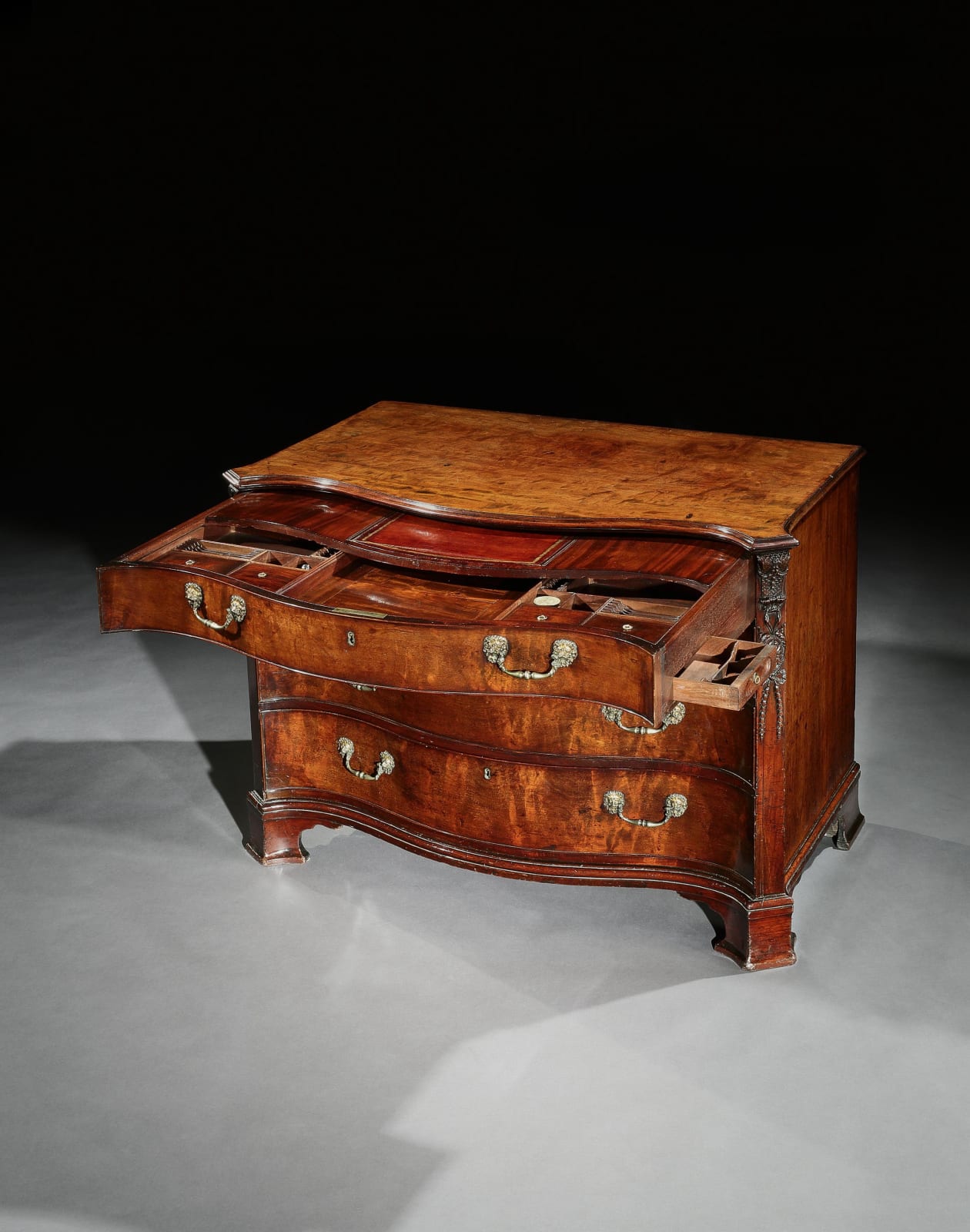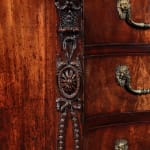A GEORGE III MAHOGANY COMMODE
W: 43” / 109.2cm
D: 24.5” / 62.2cm
Further images
Provenance
With L. Loewenthal, London, 1951
Sir Robert Victor Cooke (1902-78), Athelhampton House, Dorsetshire
Exhibitions
The Antique Dealers’ Fair and Exhibition, 1951 with L. Loewenthal
Literature
Bowett, A. and Lomax, J., Thomas Chippendale 1718-1779:A Celebration of British Craftsmanship and Design (2018), pp. 84-95
Gilbert, Christopher, The Life and Work of Thomas Chippendale, Vol. 1 (London, 1978), pp. 108-24
Publications
The Antique Dealers’ Fair and Exhibition Catalogue, 1951, p. 63
Elegantly serpentine in form, this commode is not carved on the styles with scrolls or foliage or Chinese or Gothic fretwork. Rather, classical elements of paterae, ribbons, husks and scales feature, signalling the advent of the major development in the design landscape of eighteenth-century England: the transition from the mid-century Rococo to the newly fashionable ‘antique’ taste that emerged in the 1760s under the influence of Robert Adam.1
The quality of the commode, expressed in the cabinet-work, carving and superior mahogany, suggests a leading London firm such as Chippendale or Mayhew & Ince. Aspects of the design and construction, namely the stacked block feet, S-shaped escutcheons and lion’s mask handles, are also strongly associated with these workshops, being features of their documented work.
The commode was formerly in the collection of Sir Robert Cooke, a retired surgeon from Bristol who purchased Athelhampton House in 1957, furnishing it with his extensive collections of works of art and furniture. The house is one of the most important and best preserved Tudor manors in England, with the Great Hall remaining significantly unchanged since its creation in 1485, retaining the original hammer-beam roof, stonework, stained glass and linenfold panelling.
A manor has existed on the site since before 1066 and the house, then called Pidele, is recorded in the Domesday Book. The present house was built in the fifteenth and sixteenth centuries for the Martyn family and in the nineteenth was visited several times by Thomas Hardy, whose father was as a stonemason on the property.
1 Bowett, A. and Lomax, J., Thomas Chippendale 1718-1799: A Celebration of British Craftsmanship and Design (2018), pp. 84-95 and Gilbert, C., The Life and Work of Thomas Chippendale, Vol. 1 (London, 1978), pp. 108-24









